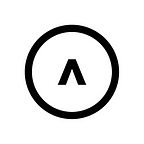Spannel is a delivery API. It allows developers to build different apps that couriers can use to deliver items from one location to another. It also allows developers to build other apps that vendors can use to get their items delivered by any of these couriers, through any of the courier apps. For more on why we’re building this, read my previous post: What is Spannel?.
I want to illustrate this in pictures and explain the mechanics of the API in more detail.
The diagram, below illustrates the basic structure of Spannel’s API.
We’ll go through this diagram from left to right. On the left of the diagram, we start with customers. Customers use vendor apps, which offer items for delivery, which could be anything that can be delivered safely from a vendor’s location to the customer by a courier in a vehicle or even on food, such as food. The vendor app then creates an order in Spannel’s API in its backend. Next, courier apps, which are different apps that couriers use to receive and complete orders, all see the new order. Any courier, using the courier app of his choice, claims the order and delivers the item from the vendor to the customer.
A developer can build any type of vendor app to serve vendors and customers in a new way, and give his vendors and customer instant access to all the couriers in his region that use any of the courier apps connected to the Spannel API. The developer doesn’t have to recruit dozens of couriers to fuel his vendor-centered app; he just has to do an API call to Spannel to create his order and all the couriers connected to Spannel through courier apps will be able to see it, automatically. This makes it much easier for a developer or entrepreneur to build a new kind of delivery platform for an under-served market.
Similarly, a developer can build any type of courier app to serve couriers in a new way, and give the couriers instant access to all the vendors in his region that use any of the vendor apps connected to the Spannel API. The developer doesn’t need to recruit vendors to offer products for delivery just to fuel orders for his courier-centered app; he just has to do an API call to Spannel to receive orders and all the vendors connected to Spannel will be able to send orders to his app, automatically. This makes it possible for a developer or entrepreneur to build apps that serve couriers’ needs, with features that the existing delivery app companies (Uber, DoorDash, etc.) haven’t focused on. It’s a whole new class of applications.
But there’s a problem. It’s a chicken and egg situation. How can a developer build a new type of delivery app for vendors, and create orders in the Spannel API to be delivered, if there aren’t any couriers to delivery them? And how can a developer build a new type of delivery app for couriers, and receive orders in the Spannel API to be delivered, if there aren’t any vendors to create them?
The answer is that Spannel needs couriers first. Those couriers need to sign up, and be ready to deliver. But they need to hang tight until vendors sign up, offer products to their customers, and their customer buy things to be delivered. This is a lot to ask a courier. It’s even more to ask a developer who’s building the first courier app, and who needs to recruit the couriers. This first developer needs an incentive to do this. And this is why we’re creating an incentive scheme to make this exact thing happen. Read about those incentives in this post: Incentives for using Spannel.
Check out spannel.com and sign up.
Next post: Incentives for using Spannel
Previous post: What is Spannel?
